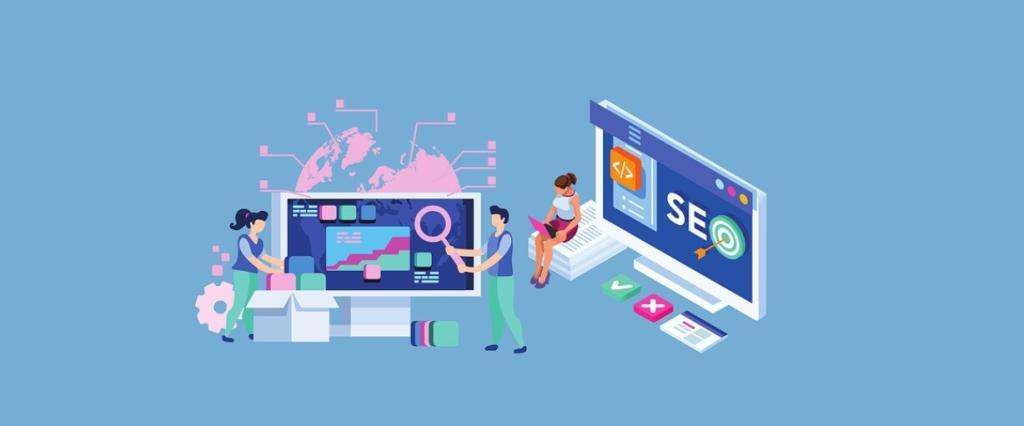What is Programmatic Advertising in Simple Understandable Terms?
Programmatic advertising is the computerized trading of online advertisements. The computerized innovation implies that media purchasers and distributors concur upon the cost per impression using bartering. Purchasers use request side stages (DSPs) to place their most elevated bid, continuously, going up against different purchasers and holding on to check whether they end up as the winner. Distributors use supply-side stages to deal with their positions and require bartering. This closeout calculation is called continuous offering (RTB), and that implies that all purchasers place their offers all the while, with no need set for every publicist, similar to it occurs in waterfalling or direct.
Programmatic platforms are basic for all sides to utilize. Distributors characterize the crowd of their site and set cost floors for their stock. Promoters characterize their main interest group, indicate what settings they expect for their advertisement imaginatively, and enter their CPM bid. Whenever everybody has set their boundaries, the automatic innovation interfaces the right inventory with the right interest, with no human connection.
When Did Programmatic Advertising Start?
The absolute first internet-based standard promotion ran way back in 1994. This was the introduction of advertisement tech, however, automatic publicizing didn’t come until some other time. There was nothing programmatic about the principal online promotion. In any case, this very first 468×60 pennant fabricated the layout that promoters would use into the indefinite future.
There is no definite date to give the introduction of programmatic advertising, it came gradually after some time, somewhere in the range of 2007 and 2010. During these years, advertisement trades, for example, Yahoo’s Right Media and Google AdEX arose. They utilized programming that joined constant offerings and launched a more effective course of media purchasing.

What is the Difference Between Programmatic Advertising and Real-Time Bidding?
Programmatic advertising is a type of innovation that robotizes media purchasing.
Real-time bidding is a convention by which this innovation is carried out.
The course of RTB in programmatic advertising follows the accompanying advances:
The RTB cycle starts when a client visits the distributor’s site.
This triggers an advertisement demand from the user program which is shipped off the SSP.
The SSP then, at that point, investigates the client data and gives it to the advertisement trade.
The advertisement trade passes the client data to the DSP.
The DSP places an RTB on this client’s impression. The worth of the bid is pre-set by the media purchaser given their ideal interest group models.
The most elevated bidder wins the impression.
The most noteworthy bidder advertisement is introduced to the client.
How Did Header Bidding Change Programmatic Advertising?
While programmatic advertising previously arose it utilized cascade barters. This means distributors pre-laid out the need for the promotion networks they utilized and the sponsors who worked with them. The stage that sells promotion arrangements on a site would decide the clients (promotion organizations, direct sponsors) who need to purchase their positions and sell their advertisements.
Direct media purchasing through the cascade offering model would need to buy stock. On the off chance that the impression was not purchased, the right is moved to the following member. The methodology was profoundly wasteful. Then, at that point, came one of the main headways in advertisement tech – the header offering sell-off. Not at all like cascade, the header offering includes a concurrent closeout. Distributors show their stock at a few promotion trades. Thus, these advertisement trades permit numerous interest accomplices to offer on those “parcels’ simultaneously.
In header offering, the most elevated bid wins, while in a cascade, the triumphant bid is the one offered with the most noteworthy need. This takes into account undeniably more exceptional stock to be accessible to media purchasers automatically. For distributors, higher contests have likewise made more income. Both of these perspectives are significant for making a reasonable promoting framework.
While programmatic advertising initially arose it utilized cascade barters. This means distributors pre-laid out the need for the promotion networks they utilized and the sponsors who worked with them. The stage that sells promotion arrangements on a site would decide the clients (advertisement organizations, direct sponsors) who need to purchase their situations and sell their advertisements.
How Can Advertisers Bring Programmatic Advertising In-House?
Programmatic in-house is on the ascent. As indicated by an ANA study, 35% of brands diminished the job of outer offices for automatic publicizing in 2017, dramatically increasing the 14% rate revealed in 2016. Contingent upon the size of your organization and your publicizing financial plan you will have different choices for carrying out programmatic advertising for your business. In the wake of bringing your automatic in-house, you will quit depending on any advertisement tech supplier, have additional command over missions and experiences from your investigation, and in a real sense work for yourself inside and out. An incredible choice for some organizations is to think about buying a white-name DSP.
This arrangement is adaptable and permits you to control every part of your programmatic advertising. The arrangement of a white-mark DSP takes more time than two or three hours assuming that you as of now have your own SSP associations.
Advantages of in-house automatic with a white-mark DSP include:
Media purchasing in a solitary record.
No interest in improvement.
No expenses to agents.
Constant examination.
Bidstream information coordination.
What Minimum Ad Spend is Recommended to Start with Programmatic Advertising?
Your base advertisement spend will vary contingent on your business objectives. Assuming you are trying another stage to measure how well it might function for your business, you can begin with a scope of around several thousand dollars.
In any case, assuming you are hoping to obtain genuine outcomes, a decent ROI, and quality change, your promotion spend may begin at around $10,000.
Assuming your business has a high-spending plan, beginning at around $20,000 or more, it’s a good idea to consider picking a white-name DSP rather than a self-serve one for your automatic commercials.
What are the benefits of programmatic advertising?
Programmatic advertising offers several benefits, including:
- Efficiency: Programmatic advertising allows for the automation of the media buying process, reducing the need for manual labor and increasing efficiency.
- Targeting: With programmatic advertising, advertisers can target specific audiences based on demographics, behavior, and interests, increasing the chances of reaching their desired audience.
- Real-time optimization: Programmatic advertising allows for real-time optimization, meaning that advertisers can adjust their campaigns in real time based on performance data, ensuring that their ads are reaching the right audience at the right time.
- Cost-effectiveness: With programmatic advertising, advertisers can set their budgets and bid on inventory, ensuring that they are getting the most value for their money.
- Transparency: Programmatic advertising provides transparency into the performance of campaigns, allowing advertisers to see exactly where their ads are being placed and how they are performing.
Overall, programmatic advertising offers a more efficient, targeted, and cost-effective way for advertisers to reach their desired audience and achieve their advertising goals.
Also Read:







